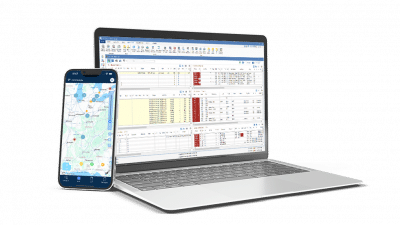As your fleet grows, so do the challenges. Managing 25 to 100 trucks requires more than just keeping up—you need to stay ahead of inefficiencies, compliance risks, and lost revenue opportunities. But what if the biggest roadblock isn’t your drivers, freight, or shippers? It’s your TMS.
If your Transportation Management System (TMS) isn’t keeping up, it’s costing you time, money, and growth potential. Here are five red flags that mean it’s time to upgrade.
1. Your Dispatchers Are Buried in Manual Work
🚛 The Problem: Are your dispatchers juggling spreadsheets, emails, and phone calls just to assign loads? A TMS should simplify and automate the process—not make it harder. If your team still relies on manual scheduling and data entry, you’re losing valuable time.
✅ The Fix: Modern TMS platforms use automation to optimize load assignments, balance driver schedules, and improve efficiency. If your system isn’t doing this, it’s time for a change.
2. Invoicing and Payments Take Too Long
💰 The Problem: Slow invoicing leads to slow cash flow. If your TMS doesn’t integrate billing with operations, your accounting team is stuck chasing paperwork instead of getting paid.
✅ The Fix: A next-generation TMS automates billing the moment a load is completed—eliminating delays, reducing errors, and improving cash flow. If you’re waiting weeks to get invoices out, your system is holding you back.
3. You Have Zero Visibility Into Load Profitability
📊 The Problem: Do you know which loads make you money and which ones are dragging you down? If your TMS doesn’t give you real-time profitability insights, you’re operating in the dark.
✅ The Fix: The best TMS platforms provide load-level cost analysis, helping you adjust rates, eliminate unprofitable lanes, and maximize revenue—all in one dashboard.
4. Your Drivers Are Frustrated with Outdated Tech
📱 The Problem: If drivers still rely on phone calls, handwritten logs, or clunky mobile apps, productivity is suffering. A disconnected system creates confusion, delays, and unnecessary back-and-forth.
✅ The Fix: A modern TMS connects dispatch, drivers, and customers seamlessly with real-time tracking, mobile communication, and automated updates. If your drivers are complaining about your tech, listen to them.
5. You Can’t Scale Without Adding More Staff
🚀 The Problem: As your fleet grows, does your back office have to grow, too? If your TMS isn’t helping you scale efficiently, you’ll need to hire more staff just to keep up.
✅ The Fix: The right TMS automates repetitive tasks, integrates with accounting, and provides powerful reporting—allowing you to manage more freight without adding headcount.
The Bottom Line: It’s Time for a Smarter TMS
If your current system is making growth harder, it’s time to switch. A modern, fully integrated TMS gives you automation, visibility, and control, helping you move more freight without the headaches.
🚛 See how PCS can help you scale smarter.



